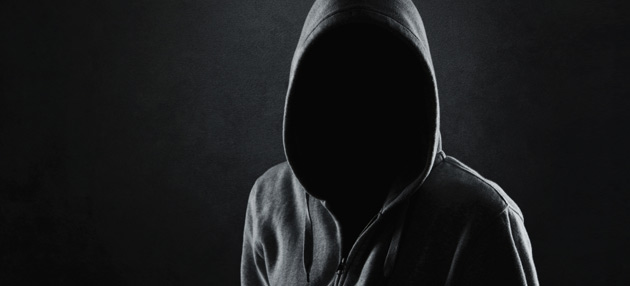Carl was back into the prison when a police officer recognized Carl from a wanted poster, and succeeded in apprehending him despite Carl’s resistance. Back to Salem, he was put into solitary confinement again. But he once again managed to escape on May 18, 1918. Guards fired hundreds of rounds on Carl, but he made his way into the woods and disappeared to catch a ride on a freight train to leave Pacific Northwest forever. He stole and robbed, and burnt churches like before all the way to the East Coast.
Carl spent much of the summer of 1920 in New Haven, Connecticut. He ensured that he was amidst a large populace in crowded places because there was security in number, as more people meant that everybody was busy including the cops, and there were greater and better chances to steal, burn, rape and kill, which Carl regularly did. In 1920, he broke into a house owned by “William H. Taft”, and could lay his hands on bonds, lot of jewellery and .45 caliber automatic handgun.
He escaped to Manhattan, and sold the bonds and the jewellery. He now had a hefty sum of $3,000 in cash and a .45 Colt automatic. He bought a yacht with the money and registered it under the name “John O’Leary”. He sailed past the south shore of the Bronx, the City of New Rochelle, Rye and arrived in Connecticut, and en route he broke dozen of boats, stole liquor and guns and ammunition wherever he could. He finally came to the New Haven yacht club to cool his heels for a while. And here he devised a new way of doing what he did.
He would go to the South Street neighbourhood, hire a sailor or two to work on board his yacht, bring them over, make them work for a day or so, have them wine and dine with him, and when they would be drunk and asleep, he would shoot them dead and dump their bodies tied with heavy rocks into the sea, for which he rowed east. He did it for three weeks and killed around 10 sailors as per his own admission. But this did not go on for too long, as the Islanders started growing suspicious of Carl. So, he sailed away to New Jersey with two passengers, whom he intended to kill there. But the plan failed when in late August 1920, a massive gale smashed Carl’s yacht to pieces. But Carl survived and managed to swim to the shore. The sailors also survived, but did not come across Carl, and never realized that the devastating gale spared them a brutal death.
 Carl was convicted of burglary and illegal possession of a firearm in 1921 and was sentenced to six months in prison, and was arrested soon after he was released for participating in a running gun battle with the police when he, having joined a maritime union, tried to enforce a labour strike against the strikebreakers. He was granted bail, but he jumped bail to flee to Connecticut, and took a ship to Angola, a Portuguese colony in Africa.
Carl was convicted of burglary and illegal possession of a firearm in 1921 and was sentenced to six months in prison, and was arrested soon after he was released for participating in a running gun battle with the police when he, having joined a maritime union, tried to enforce a labour strike against the strikebreakers. He was granted bail, but he jumped bail to flee to Connecticut, and took a ship to Angola, a Portuguese colony in Africa.
He landed a job on an oil rig run by the Sinclair Oil Company. And while he was working with the oil company, he lured an 11-year-old African boy in the town of Lauda to the Sinclair Oil Company grounds, sodomized him by force and killed him by smashing his head against a rock.
Thereafter, Carl stayed at the Lobito Bay on the Atlantic coast for several weeks in a fishing village, and while the locals did suspect him of having killed the boy, no concrete evidence was ever found against him and nobody could say for sure if he did kill the kid. A month or so later, he hired six of the natives for a crocodile hunt in the jungle. The enterprise could get him substantial money from the Europeans in Congo. The natives knew that it was their chance to make some good money. So, they demanded a share in the profit, to which Carl agreed. They had no idea that making huge profits was not the only, or even the foremost, idea on Carl’s evil mind.
As the native sailors rowed downriver, Carl killed all six men one after the other by shooting them in the back and while they lay dead in the canoe, he shot each one of them again in the back of the head to ensure that they were dead, after which he threw the dead bodies to the hungry crocodiles to feast upon before returning to Lobito Bay. Upon his return he realized that there were many who had seen him hire the men and the canoe. So, he promptly left Lobito Bay and rowed north towards Point Banana and arrived at the Gold Coast.
To collect enough money to pay for the fare to the Canary Islands, he robbed the farmers. But that did not work because those he robbed did not have enough money. And he was broke. So, he crept into a ship and landed in Lisbon, Portugal. But the tale of his deeds had preceded him, and the local authorities knew of his African adventures, and the cops were looking for him. Lisbon being unsafe, he hid in a ship bound for America and the summer of 1922 saw him back on the soil of the United States.
Few days later, Carl approached the U.S. Customs office in New York City to have his captain’s license renewed and to have the papers for the Akista — the yacht wrecked two years back—restored with the intention of stealing another boat and turning it into the Akista by refitting it under the name. He started looking for a suitable yacht in the local boatyards of the New York area and went up to Connecticut coast to no avail. He went into the seaport of Providence, Rhode Island, but no suitable boat could be found. He continued his search and came to Salem, Massachusetts. He found no fitting yacht, but did come across a 12-year-old boy, George Henry McMahon, walking alone on July 18, 1922. The young boy was out to buy a few things for one Mrs. Margaret Lyons, who was George’s neighbour and ran a restaurant. Another neighbour, Mrs. Crean, saw George talking to a stranger the same afternoon. “In the afternoon of July 18, while sitting in front of a window in my home, I saw a boy and a man walking up the avenue. The man was dressed in a blue suit and wore a cap,” she later told. Carl accompanied the boy to the store he was going to, and later convinced the child to go with him for a trolley ride. Carl took the boy to a deserted place, and, as per his own confession, sodomized the boy six times, and killed him by hitting his head with a rock, after which he pushed several sheets torn out a magazine down his throat, and covered the body with tree branches before exiting the crime scene.
However, a nervous looking Carl was seen by two residents of the area, and they noticed the strange man in hurry, but carried on walking. The body of the boy was found three days later on July 21, 1922, and though the murder made it to the headlines of the newspapers, was much discussed and the police hotly pursued the case and persisted in the investigation, it remained unsolved for years until in 1928 the two witnesses who had seen a nervous Carl exit the crime scene in 1922 saw him in police custody in connection with another murder in Washington, D.C., and had no problems identifying him.
After killing George, Carl returned to Westchester County Area in search of a boat resembling the Akista. In 1923, he found an apartment in Yonkers, New York, and also landed a job at Abeeco Mill Company as a watchman using the name ‘John O’Leary’. Here he came across a 15-year-old boy by the name George Walosin. “I started to teach him the fine art of sodomy but I found he had been taught all about it and he liked it fine,” Carl would later write. But he did not keep working for long.
In 1923 itself, Carl found a suitable boat and stole it and sailed to Long Island Sound, where he went around at night burglarizing, robbing and raping. And, in June 1923, sailed back to Yonkers and picked up George Walosin promising him work on the yacht. On June 25, 1923, the boat left Yonkers and they sailed up to a small bay off the Hudson. Carl gave the boat a quick makeover by painting it, and putting a new name at the stern, after which he went looking for a buyer.
A young man agreed to come on the boat to have a look on the night of June 27, 1923, and the two had a few drinks together, after which the man tried to get violent with Carl. Of course, he had no idea as to what he was dealing with, and had to pay for it with his life. He was shot twice in the head. His body was tied to a metal weight and hurled overboard to sink to the bottom of the river. George Walosin was witness to the murder, and was scared. When they anchored at Newburgh, a scared George jumped off the big boat and swam to the shore, and went back Yonkers, where he disclosed his sexual ordeal with Carl to the police.
Yonkers police promptly dispatched a lookout notice to all Hudson River towns, and on the morning of June 29, 1923, Carl was picked up from his yacht by Nyack cops and charged with burglary, robbery and sodomy. He gave his name as “O’Leary”, occupation as “seafarer”, place of birth Nevada and age 40.
He and another prisoner, Fred Federoff, tried to break out of the jail on the night of July 2, 1923, but were caught by the guards, and Carl was sent into solitary confinement. Carl got himself a lawyer, Mr. Cashin, and asked him to arrange for his bail and promised to give him the boat, which was worth five or ten thousand dollars, in return. Cashin got Carl out on bail, and when he went to have the boat registered, it was confiscated by the police, for it was found to be stolen. Obviously, Carl was to jump bail, which he did without wasting time and dashed straight back to southern Connecticut, and drifted to New Haven, where he stole and robbed for a living.
When, on the night of August 9, 1923, he was looking for a victim to rob, he ran into a young boy begging for money. Before the boy could understand, Carl’s knife was at his throat. He dragged the boy into the woods and while the child sobbed and begged for mercy, he was sodomized twice over before he pulled the boy’s own belt out, wrapped it around his neck and strangled him to death. He threw the body into the bushes with the belt wound around the neck. Nothing had dampened Carl’s desire to kill and destroy. There was more to come.
Originally written for and published in LAWYERS UPDATE as a four-part ‘Crime File’ in January 2014.





